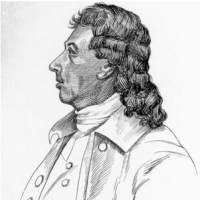










Jonathan Hornblower was a British pioneer of steam power.
Personal life
The son of Jonathan Hornblower the Elder and the brother of Jabez Carter Hornblower, two fellow pioneers, the young Hornblower was educated at Truro Grammar School. He was baptised at Trelever on 25 July 1773, aged 20 (he and his family were much involved in Baptist churches in Cornwall), and was apprenticed to a metal-working tradesman at Penryn.He married twice, firstly to Rosamund Phillips in 1775 and afterwards to Elizabeth Jordan with whom he had two surviving daughters, Rosamund (1789) and Elizabeth (1790). He died on 23 February 1815 and is buried in St Gluvias Churchyard.
Compound engine
He invented the compound steam engine in 1781 and patented on 16 July in the same year. This engine has two cylinders instead of single-cylinder old engine, it contains high-pressure and low-pressure steam cylinder. The principle was that, use the steam from the high-pressure cylinder into the low-pressure cylinder and expansed the steam at last. Even though it was a revolutionary of steam technology, unfortunately was prevented from pursuing his invention by litigation with James Watt (Boulton & Watt) over intellectual property.His compound engine principle was not revived until 1804 by Arthur Woolf.Following the expiration of Boulton and Watt's patent, Hornblower's compound engine principle contributed significantly to the increases in steam engine efficiency,and it was the foundation of expansion engine.
Rotary engine
After the patent litigation with Boulton&Watt, Hornblower came up with an idea of a new kind rotary engine. He made efforts on it for several years, and patented on 5 June 1798. The engine's construct was the most complex so far, but he also ran into trouble with Watt's patents on the subjects before.
He developed a steam-wheel in 1805.
Double beat valve
He invented the double-beat steam valve in around 1800.This valve is a type of poppet valve, it could open against a high pressure with a minimum of force, usually operated by trip valve gear and general used in railway locomotives, beam engine, grasshopper engine and paddle steamer. It widely used during the 19th century.